This August, the MACMA team put our backpacks on our backs again and went to explore some caves, villages, and paths between mountains. On this occasion, we propose a tour full of history and culture through the last centuries in Marina Alta. The experience is designed to be done by car, motorcycle, or bicycle between different towns and walking or by bicycle within the towns and along the proposed routes. An itinerary of two days and 10 municipalities, where one day the bandits left the mark of their history. Discovering the territory differently is possible, and our team has done it again. We have intertwined history, culture, and heritage with our territory and the spaces that surround us in a fun and dynamic way. Village by village, through the most hidden territory of the Navy, we will visit the most emblematic elements related to the world of banditry. Stay with us, and we will uncover the treasures hidden in our towns and landscapes.
We are already at the summer equator, and with this heat, what we want most is to find ourselves in the shadow of the mountain and be able to enjoy the clear sky that it offers us.

A BIT OF HISTORY. We know where we come from to decide where we are going.
Banditry has existed throughout human history, with a large presence in the Mediterranean from the 16th century to the end of the 19th. The Marina Alta was a regular home for numerous brigands to hide. This figure has been very relevant in society, both in the social and cultural fields.
From the 16th century on, banditry ran strong in the territory of the Navy and persisted until the end of the 19th century. This phenomenon is linked to the social, political, and economic system of the time, especially due to the harshness of the lordly regime that encouraged extreme poverty. Another cause is the great economic, political, and health crises linked to different waves of epidemics. These fostered a powerful social crisis that fed the fat of gangs of robbers or bandits who were looking for a way to survive a very hard time. Their actions were based on rural banditry, robbing wealthy people along commercial routes and mountain paths, showing nuances of revolt against injustice and poverty.
The phenomenon of banditry led to a division of public opinion. On the one hand, a group of people saw the riders as “cursed” who attacked their lives and as a chakra to be extinguished. Others saw them as extraordinary people and heroes in the style of Robin Hood, who stole from the rich to give to the poor.
A smoke of drifters inhabited the mountains and caves of our territory. Incessantly, the rich and landowners were assaulted by different gangs of bandits from the Marina Alta, the Marina Baixa and the Safor, but there is one robbery that, today, has become a literary legend. We are talking about an event that was mentioned a lot in the Comtat and Marina Alta regions: the Benimassot robbery. On February 22, 1874, a gang of thieves called “Segrestadors” de la Marina attacked the Church of the Immaculate Conception in Benimassot at dawn. The 34 thieves, with Josep de la Tona at the head, perpetrated a looting without violence, locking the citizens inside the church and naming the richest people in the municipality to force them to open their houses to them. So, they could loot without any inconvenience. Finally, the bandits fled through the Malafí ravine, from Vall de Seta to Marina Alta.
This event, together with all the others experienced during the past four centuries, caused banditry to have a great influence on the lives of the citizens of the Marina Alta. Currently, the “roders” represent part of the characteristics of the Valencian people and their stories are still alive in the memory of the Valencian people. There are not too many files and documents that have been found about the bandits. However, the mark they left has meant that their stories continue to circulate by word of mouth in the streets of the towns of La Marina. This turns these adventures into living history and collective heritage. We can find this imprint in literature, language, and our expressions. Over the years, a flurry of books have been written about banditry in the Marina Alta, as well as some stories that narrate the robbery of Benimassot. We can also see some expressions in everyday life: “Stay like Camot”, “That's a winner “, or “She has stayed like Pinet's girlfriend, with her face washed and her bun done”.
Below, we leave a small list of gangs and bandits that operated in the Marina Alta and surrounding counties:
- Josep de la Tona de Pedreguer. Head of the gang called the Segrestadors de la Marina, composed mainly of people from the villages of the Rectoria such as Benimeli, Ràfol d'Almúnia, Sanet and the Negrals, and Sagra.
- Pinet de Tàrbena operated along the path of the vaults until Parcent.
- Pego's Ganyan gang.
- Eugeni Cruanyes from Xàbia, who performed in Senija and Xaló.
- Francesc Xolvi de Xàbia, who performed in Benissa, Calp and Llíber.
- Mixana of Castell de Castells.
- The Destralet gang, from the Ebo Valley.
- Camot de Xàtiva, one of the most well-known bandits.
- El Manco Calderón, one of the most well-known bandits in Cocentaina.
- Jaume the Bearded, quite a Crevillent legend.
- Batiste el Marca, from Quatretonda
- Josep Agüir Esquer, from Guadassuar.
Curiosities:
- Thief: person who steals. Also called “roder” or “bandoler”.
- Benimassot robbery: in this robbery, they got between 53,000 and 55,000 reales, which is currently equivalent to €660,000.
- Gangs of bandits used the caves and other spaces in the mountains as a hiding place and to protect their “treasure”.
PROPOSED DAYS. Step by step we are making our way.
This month we propose an experience to delve into a small part of the history of the Navy. Let's take this opportunity to escape the heat. During the proposed days, we will combine paths and village routes, with a visit to emblematic spaces that have played a role in the history of banditry.
To start this excursion, we will go to Pedreguer, a town located in the central part of the region. The relationship of this municipality with banditry is due to a very important personage during the 19th century. We are talking about Josep de la Tona, a bandit and leader of the gang “Els segrestadors de la Marina” who carried out one of the most felt strikes throughout the territory, the robbery of Benimassot. La Tona's name has spread so much from mouth-to-mouth, that in this same town we can find a street with its name, Josep de la Tona Street. To start the day, we suggest doing part of the Molinets de Pedreguer hiking route, leaving the car on País Valencià Avenue and starting from here on the footpath to Molinets and going down again. On the way back, we recommend stopping for breakfast at one of the village bars and ordering a Malcriat (toasted bread with half full of tomato and tuna, and the other half of the slice with tomato and anchovies). After recharging our batteries, we will go by car or on foot to the Hort de l'Alé, to visit an installation, built in 1830 and subsequently rehabilitated with the aim of promoting sustainability in the ecological, ethnological and solidarity aspect. Finally, by car and by foot, we will visit the Ocaive Castle, dating back to the medieval period and recently rebuilt to avoid complete demolition.

We will then head to the next municipality, El Poble Nou de Benitatxell, located on the south coast of the Marina. First, we recommend taking a walk around the small town centre and visiting El Portalet, the name given to the door that gives access to Plaça de l'Església from its back side. From there we will have spectacular views of Montgó and its plateau. We will also visit the Church of Santa Maria Magdalena which is located at the highest point of the urban core. Also, the Oratory of Sant Jaume Apostol, known as the Oratory of Jaume Llobell, where there was a school and a hospital attached to the temple. Finally, we will visit the Cova de les Bruixes , considered an archaeological site that encompasses all the cultures that have passed through the municipality, from the Iberians to the first Christian settlers, in which the Andalusian presence stands out. The popular legend tells that this cave was a hiding place for thieves and bandits, where they hid stolen wealth. Because people did not approach the cave, they shouted, burned sulphur, and told the town that there were witches in that cave, hence its name. Thus, the bandits made sure to scare people and maintain a safe haven. In addition, the City Council has didactic notebooks for all ages and to be able to do them as a family. We leave you the link to download the materials by CLICKING HERE .
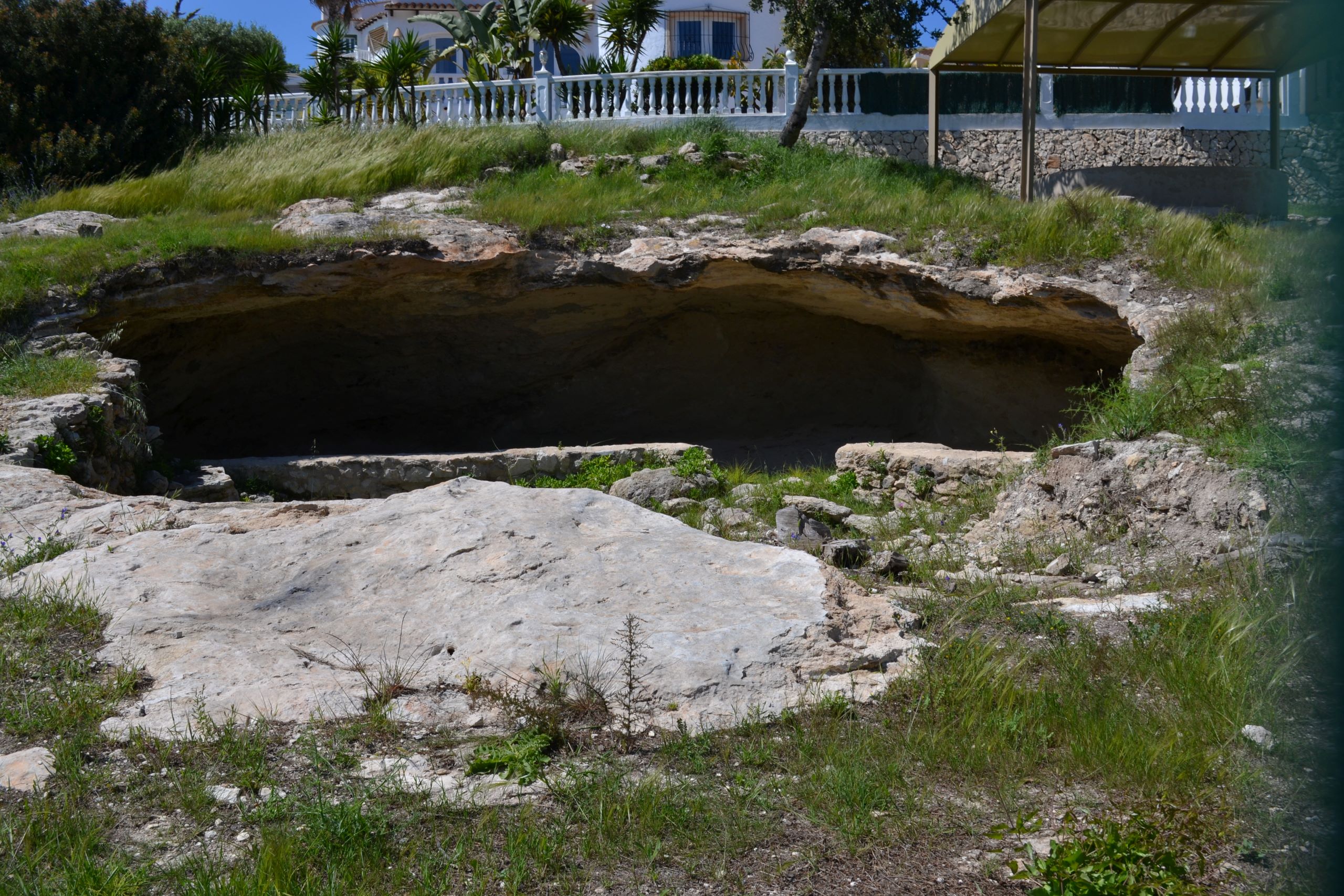
The next town we will visit on this first day of the experience is Senija. A municipality in the interior of the region that is related to gangs of bandits, especially the Cova de la Garganta. It was the refuge of a bandit called Tona, who robbed merchants going to and from the old road from Valencia. In addition, we recommend going into the hiking trail organized by the Senija City Council, the Margaló Mountain Club, and the FEMECV, called el camí dels bandolers. It is a reminder of that very important part for the town, which be the bandits. In addition, we will visit the Gothic Arch and the Old Town Fountain, two emblematic spaces for senigers.
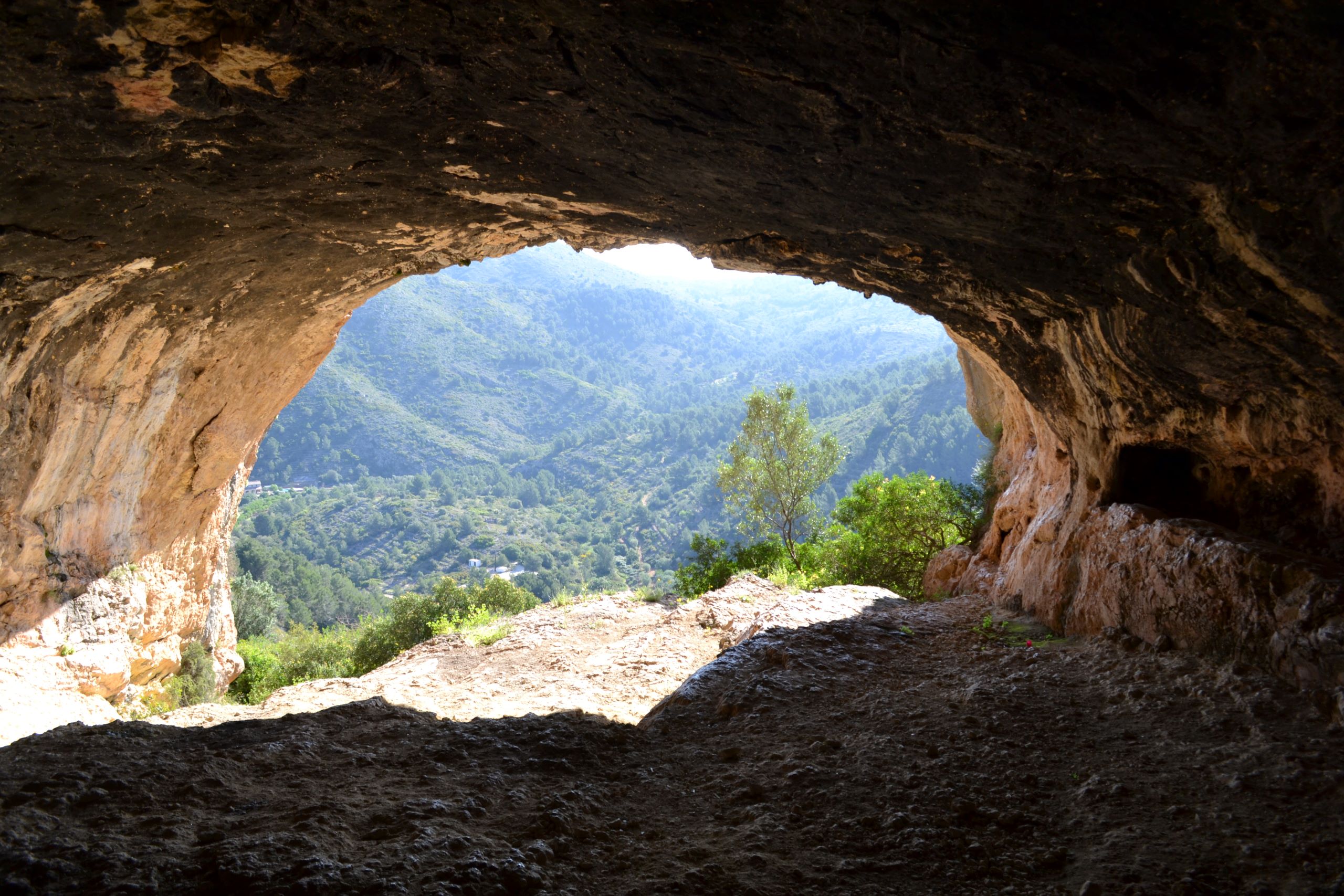
To close this first day of the proposed days, we will do it in Castell de Castells, the inland town that closes the region with the counties of the County and the Marina Baixa. From this municipality was Mixana, a bandit known to the people of the Navy. In addition, from Castell de Castells begins the hiking route along which the bandits fled in the Benimassot robbery. This is the route PR-CV 168 Castell de Castells — Pla de Petracos — Barranc de Malafí — Benimassot, a total of 35 kilometres, with a difference in altitude of 1162 meters and an average of 11 hours. During the journey, we will visit the Santuari del Plan de Petracos and Barranc de Malafí, the towns of Fageca, Famorca and Tollos until we reach Benimassot. Another option is to make it shorter, leaving from Castell de Castells to the Petracos plan and returning the same way. Once we return to the village, we can take a walk around the streets and visit the church of Santa Anna. To end this complete day, we can go to a bar and order “minxos” for dinner, a very typical dish of the area.
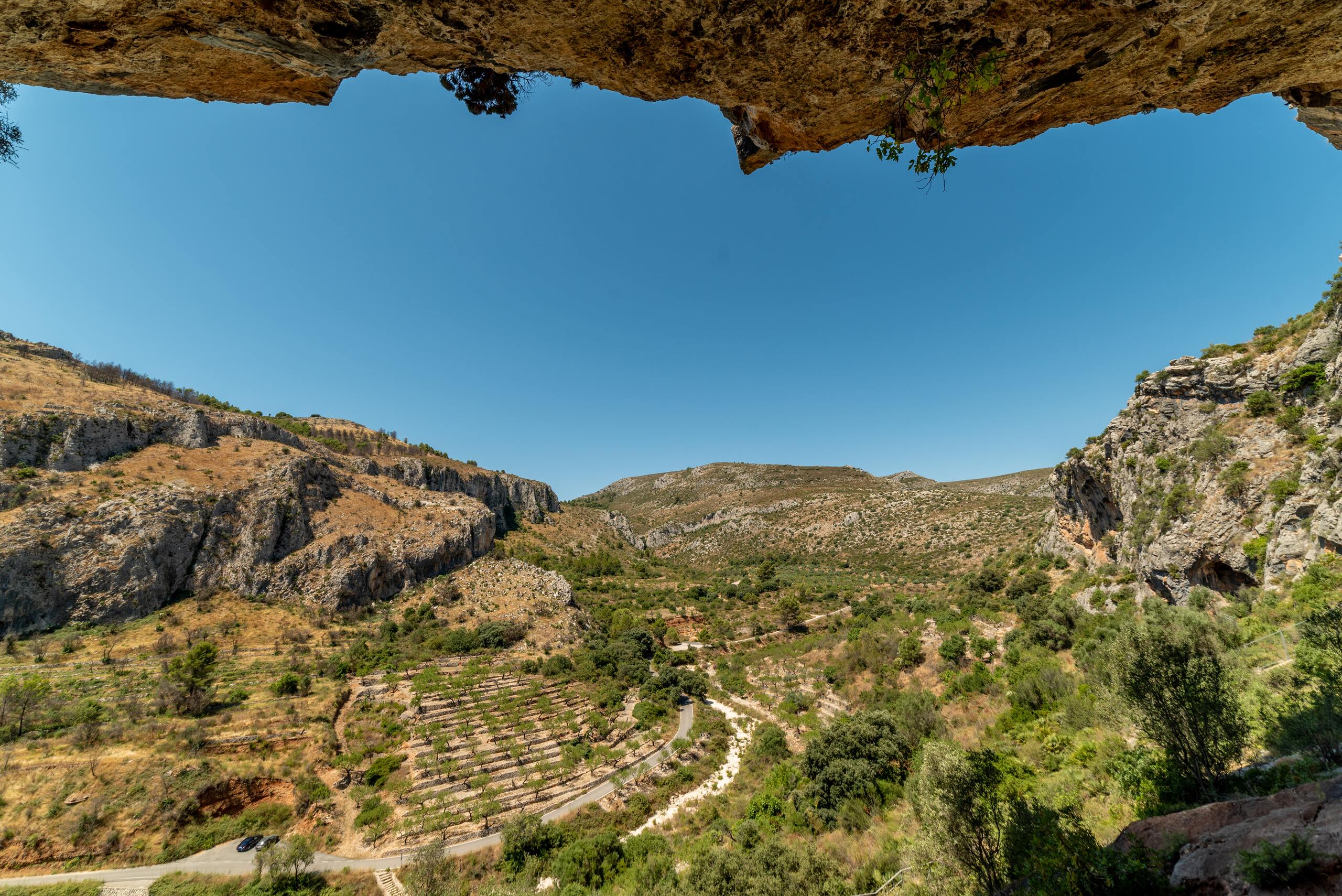
On the second day of this experience, we will continue visiting the towns of the bandits, the roads along which they raided and places where they hid. We will start this day visiting one of the four valleys of the Marina Alta. The Vall d'Ebo, located in the western interior of the region, nestled in one of its steepest areas. In addition, it is the town of some bandits from the Destralet gang. To start the day, we go around and take the opportunity to see the church of Sant Miquel and the Ethnological Museum and Rock Art Interpretation Center. It's an old house that has been turned into a museum with the collaboration of all the neighbours. Finally, when we take the car to go to the next town, we will make a last stop at the Cova del Rull, discovered in 1919 and which is now open to the public. We can enjoy the cave full of stalactites and stalagmites that create shapes of various colours.
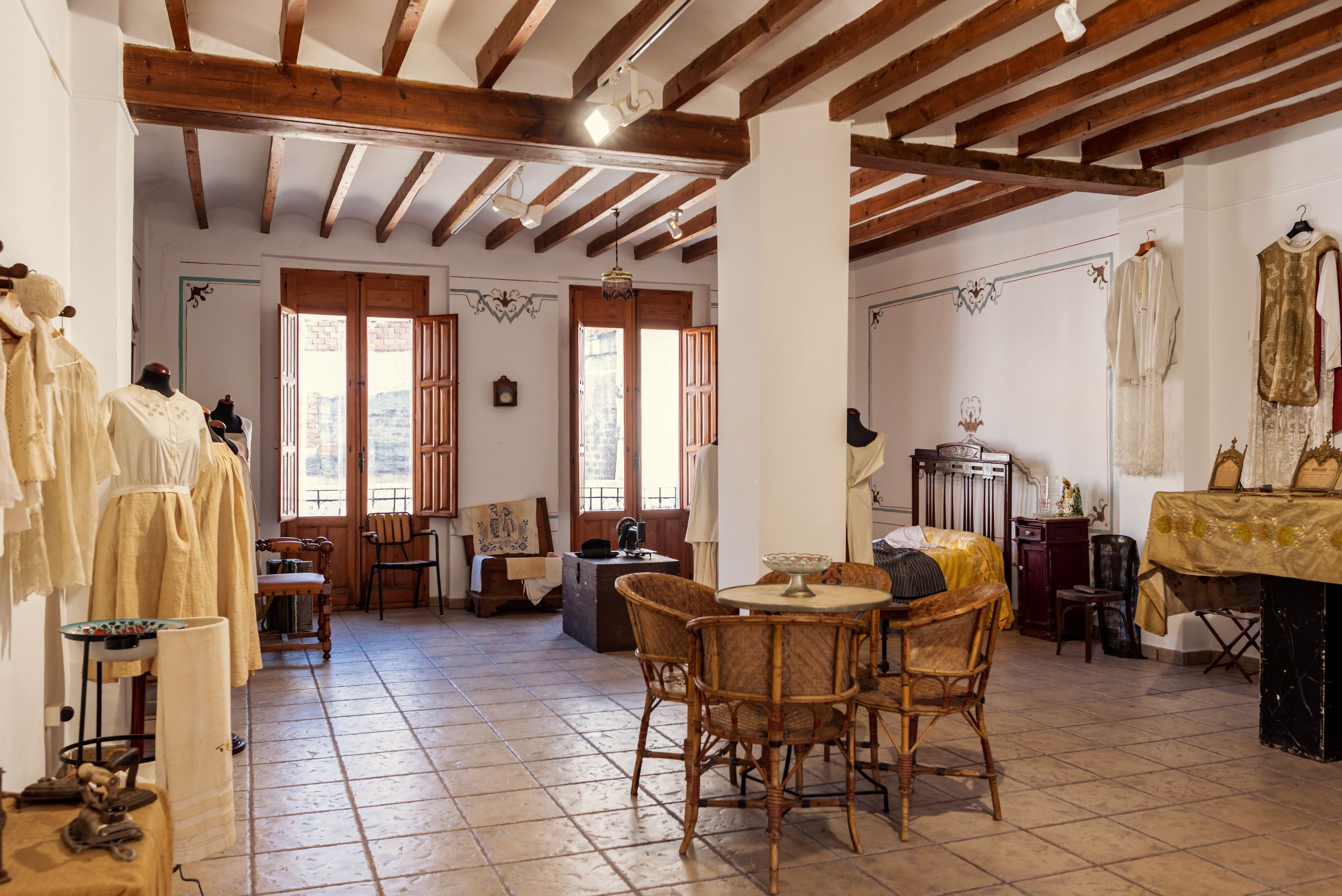
From this municipality, located at 394 meters above sea level, we will descend to visit a small sub-county, Rectoria, made up of five municipalities. The majority of these were the towns of the bandits who formed the Marine Kidnappers gang and who carried out one of the most notorious robberies in Valencian territory, the Benimassot robbery. This gang from the Rectory with its leader, Josep de la Tona, fled and hid their booty in different towns such as Sagra, Ràfol d'Almúnia, Benimeli, and Sanet i els Negrals.
The first town is Sagra. Before visiting any place, we will go to the bar to have one of its famous figatells for breakfast together with peanuts, olives, and tomato and onion salad. Next, we will start going down the streets, until we reach the square, where we find the Town Hall and the church of Sant Sebastià Màrtir. We will also come across Plaça de les Fonts, one of the places most valued by the people of the town, where they always come together to form a procession. From here we will start a route that will cross three more towns in the Rectory, walking along paths and visiting their most emblematic spaces.
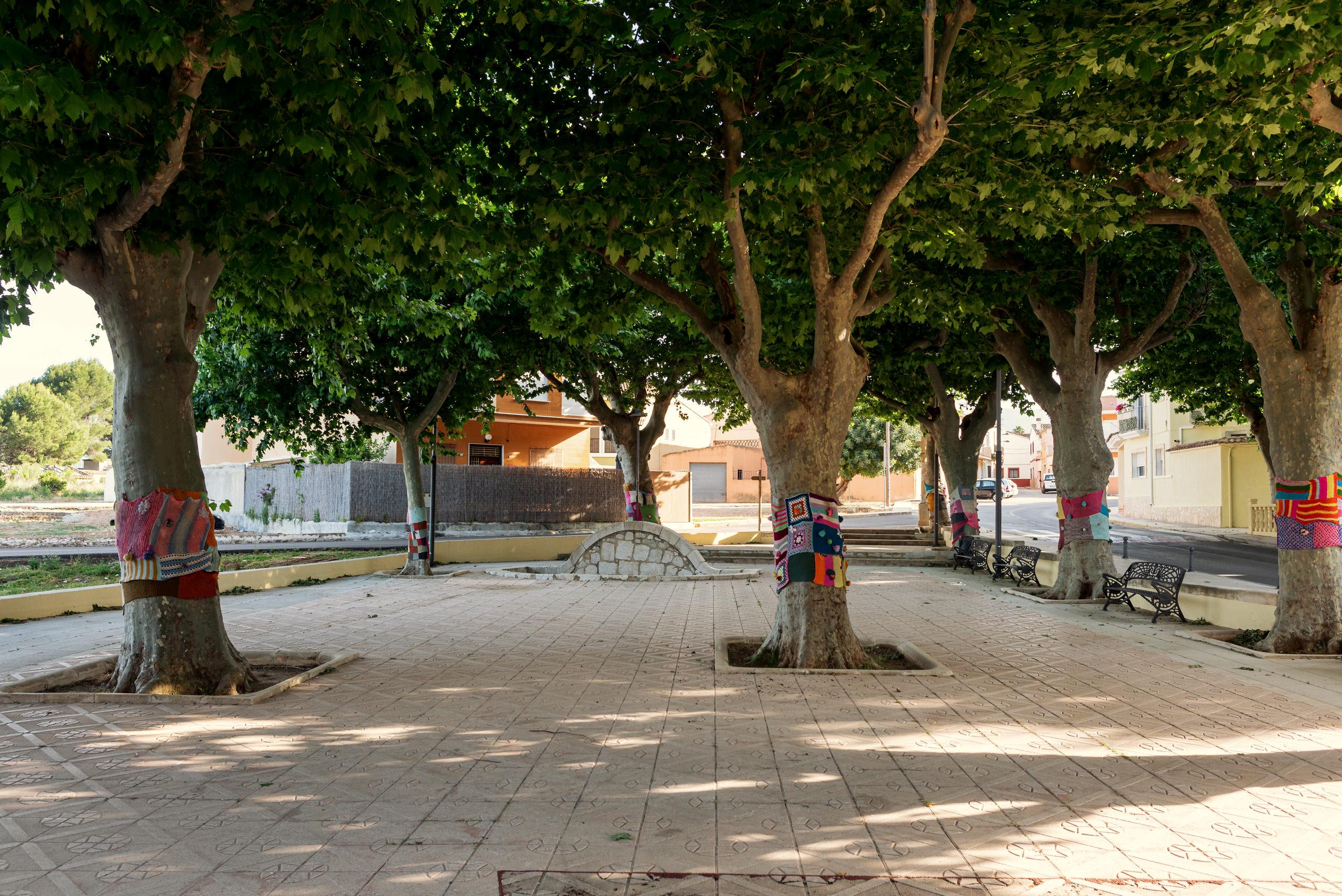
We will start on the Séquia Perduda path, walking among orange trees until we arrive at the Fondo path in Ràfol d'Almúnia. Right there we find the chopped Shield of the Second Germania War, chopped by the farmers in protest against the lords. At this same point we can also see the laundry builiding, a very important space for the population's day-to-day life, since long ago women had to go to the drains to wash their clothes. We continue walking through the town and will visit the church of Sant Francesc de Paula and the park at the end of the town, in the sports area, called by Rafolencs, the Xops.
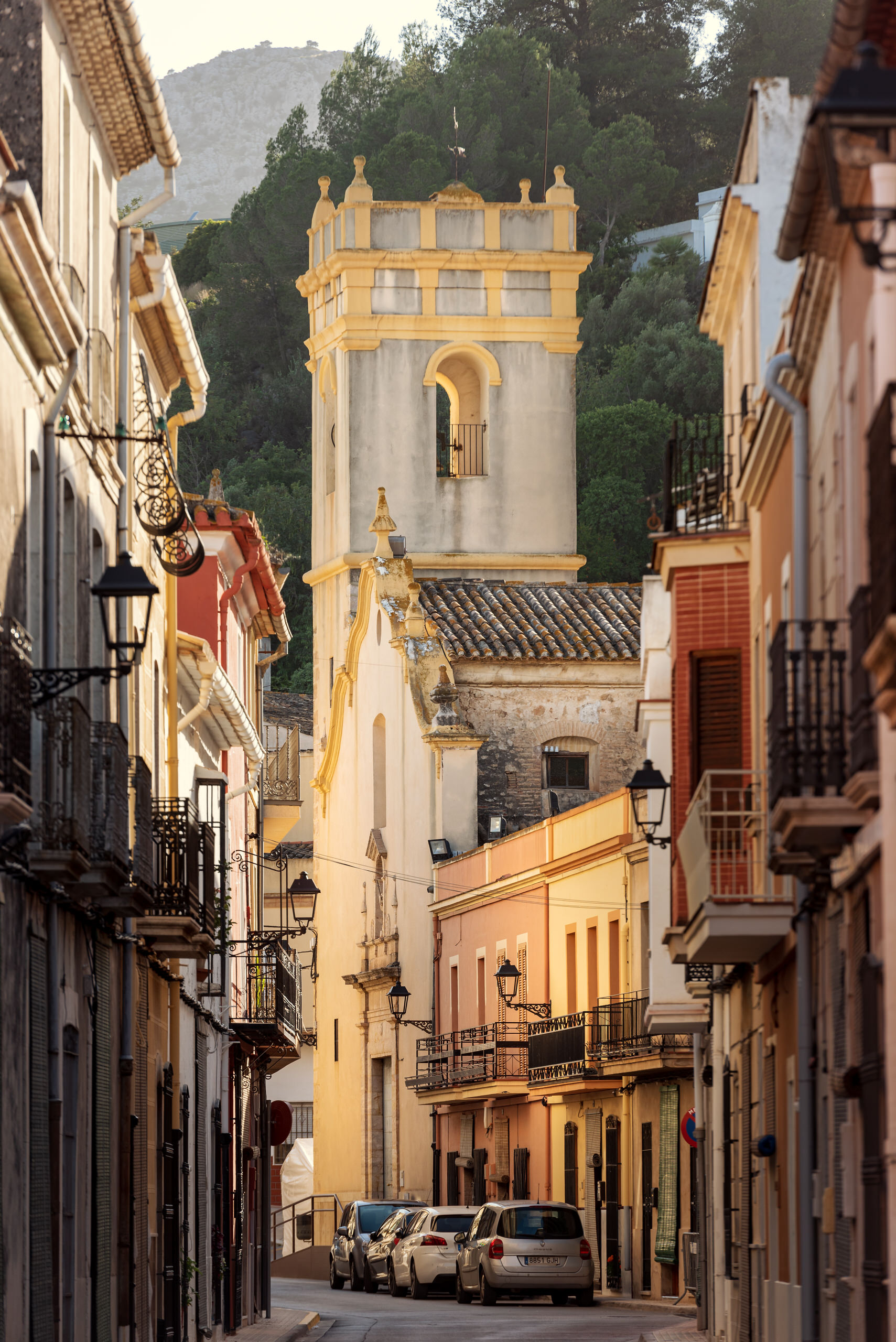
To get to the next village, we will go from going by road to walking along the CV — 729 until Benimeli. A small town with charm in every corner. On the same road we will find the Font de Sant Andreu. Entering the narrow streets, we will find many magical spaces in the town. In the main square, next to the church of Sant Andreu Apostol, is the Casa de la Tia Xima, a significant place in the history of banditry in the Navy. Legend has it that it was the house where they kept the treasure from the Benimassot robbery. We will continue visiting the Placeta Gil — Premsa d'oli and the Calvary Road park.
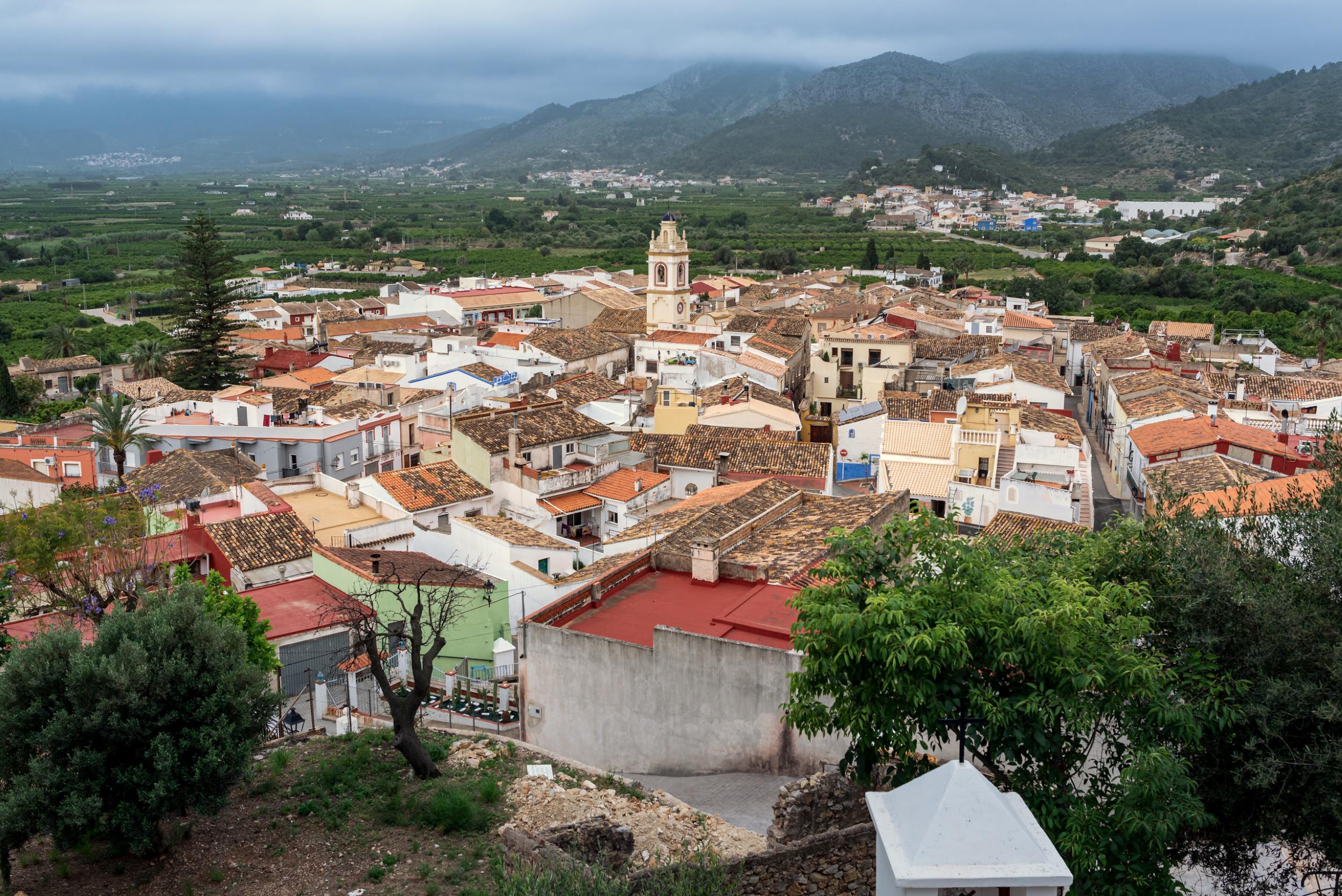
On the same CV — 729 we will go to Sanet and els Negrals , the last village of la Rectoria. Located at the foot of one of the slopes of the Segària mountain range, the central axis of the region, on the north side. This municipality was born with the unification of two population centres. Moving forward through the streets, we will find the church of Santa Anna and Plaça del Crist, which was built with the financial collaboration of the whole town. From this place there is one of the best panoramic views of the valley and the Girona river. In this square, festivals are celebrated in the summer and the male and female paramedics come together for brotherhood. Right in front of the square is the Palau de la Senyoria, or Palauet dels Senyors de Merita, academic style, built in the 18th century and reformed in the 19th. To finish with Sanet i els Negrals and with the sub-county of la Rectoria, we will visit the Bolata. It is a spring located between Tormos and Sagra, whose flow is mainly formed by the Sierra del Migdia and the Recingles. The water runs from west to east, and is characterized by an irregular operation.
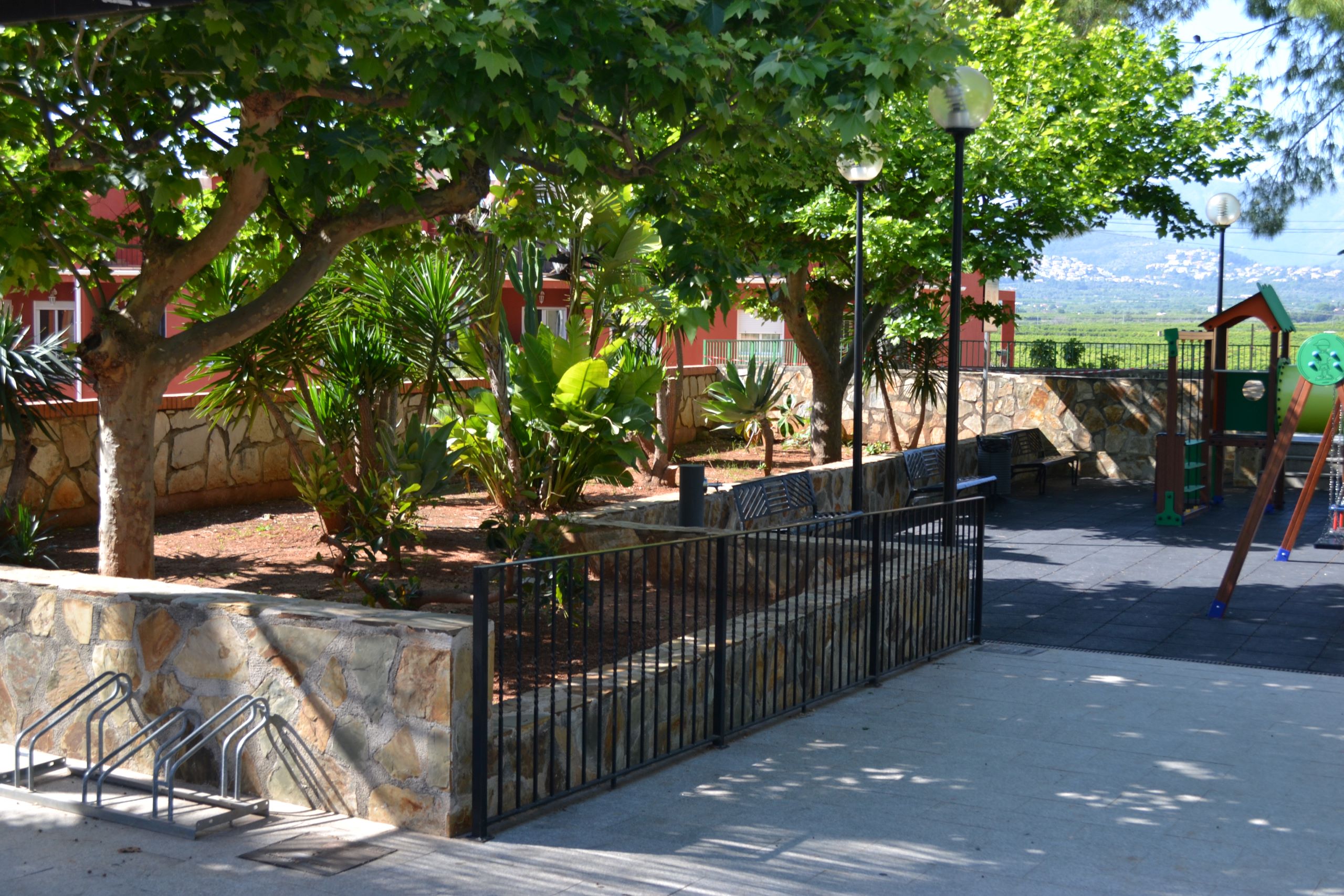
When we finish the visit, we will return on the same road to where we have the car and head to Pego, making the first stop at the Natural Park of the Marjal. There we take an interpretive itinerary by boat through the Salinar. Then we will head to the municipality itself to make a route through the Walls and the center. There we may visit the town hall, the House of the Senyora and the Portal de Sala. This is the only one left standing of the three old portals that gave access to the fortified town. To end this experience full of history, we will go to Paseo de Cervantes, where we will see the Font dels Quatre Xorros, a public fountain from the beginning of the 19th century, of natural origin. Here we will end the day, resting in one of the bars on the Passeig, to have a refreshing drink and some traditional food of the town.
**This experience is designed to be done over two days, either consecutively or on two different days. The MACMA team suggests routes, spaces, and buildings to visit, but each person can adapt the experience to their abilities, physical resistance and interests. If you want more information or things to visit in each town, you can go to the Descobrim la Marina Alta website and adapt the experience to your tastes with the backpack.

AND MORE. On the table and in bed at the first cry.
 Where to buy |  where to eat |
 where to sleep |  Activities and others |